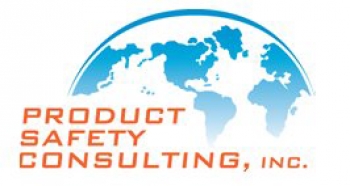Fiberglass sleeving is often used in many different types of electrical products. It is used to insulate from heat. It is used to hold wires together. It is used to cover splices. It comes in different materials for different applications.
It is important to know there are difference types of sleeving and although it says UR, it may be the wrong UR category. There are two main categories UL Recognizes Sleeving under – Flame Retardant and Coated Electrical. The last thing you want to do is pick the wrong one, order 100,000 feet of it, go into production only to find out 2 weeks before shipping it is UR in the wrong category.
UZIQ2.GuideInfo - Sleeving, Flame Retardant – Component
CONDITIONS OF ACCEPTABILITY
Consideration is to be given to the following Conditions of Acceptability when these components are employed in the end-use equipment:
1. This sleeving has not been investigated for any electrical or mechanical capabilities.
2. This sleeving has not been investigated to determine its thermal performance.
3. This sleeving has not been investigated for use in contact with sharp edges, corners, projections or burrs, or where subject to tension, compression, abrasion, repeated flexing or where exposed to ultraviolet radiation or oil contamination.
UZFT2.GuideInfo - Sleeving, Coated Electrical - Component
CONDITIONS OF ACCEPTABILITY
Consideration is to be given to the following Conditions of Acceptability when these components are employed in the end-use equipment:
1. Sleeving shall not be used over the maximum voltage rating.
2. Sleeving shall not be used over the maximum temperature rating.
3. The minimum wall thickness of the sleeving shall comply with the requirements of the end product.
4. Sleeving marked "Oil Resistant 60°C " or "Oil Resistant 80°C" has been investigated for intermittent or occasional contact with oil not exceeding the oil rating.
5. Sleeving marked "VW-1" has been investigated using a fine wire support in conducting the flammability test.
6. Sleeving is not acceptable for use in contact with sharp edges, corners, projections or burrs , or where subjected to tension, compression, abrasion or repeated flexing without additional testing.
7. Sleeving is not recommended for use where it is feasible to employ a standard insulated conductor (appliance wiring material) intended for the purpose.
8. Sleeving shall be used in dry and damp locations only as defined in ANSI/NFPA 70, "National Electrical Code."
EU Construction Products Regulation
By Dan Arnold, Sales Engineer
Product Safety Consulting Inc.
We hear from numerous manufacturers currently precluded from selling in the EU because their products are not CE marked. This is especially true of construction products, which are often sold under large contracts that specify CE marking. Construction products are a good example of a well-established Directive being transitioned to a Regulation, which we covered in a previous article. Construction Products Directive 89/106/EEC (CPD) was fully replaced by Construction Products Regulation 305/2011/EU (CPR) on 1 July 2013. The CPR has several interesting differences from the more common Directives and Regulations used for electrical products.
Instead of the more familiar Declaration of Conformity (DoC), the CPR requires a Declaration of Performance (DoP). Although basic information of DoC and DoP is the same, the DoP requires a declared performance level of essential characteristics. One example characteristic is compressive strength for some structural products. The essential characteristics are an important CPR concept and are in the harmonized standards for each construction product type or family. The performance levels of essential characteristics are intuitive for construction products, which must have physical integrity to function as intended over many years. Performance to at least one essential characteristic must be declared, but to be competitive and comply with the intent of harmonized standards, multiple characteristics are likely.
Another important attribute of the CPR are the Assessment and Verification of Constancy of Performance systems (AVCP systems). The AVCP is a surveillance mechanism to ensure the declared performance of essential characteristics is maintained. Each essential characteristic specified in a harmonized standard will have one of these AVCP system numbers assigned: 1+, 1, 2+, 3 or 4, from most to least comprehensive. System 1+ requires the manufacturer to maintain Factory Production Control (FPC) and periodically test samples. It also requires a Notified Body to assess product performance, initially inspect the manufacturing plant and FPC, periodically assess the FPC, and audit test the product. Conversely, AVCP system 4 only requires the manufacturer to assess performance and maintain FPC.
CE marking can be arduous for some construction products, but the legislation and compliance scheme is well established and generally intuitive, given the critical function of these products. Product Safety Consulting can help manufacturers understand the requirements and achieve CE compliance.
References:
https://ec.europa.eu/growth/sectors/construction/product-regulation_en
Compliance Tip: Designating the Correct Driver Can Save Time and Money
LED Drivers have always been in the Recognized Component program at UL. One problem is being able to use multiple suppliers of Drivers without having temperature testing being repeated. UL was proactive in this regard and has introduced the TL program for Drivers. Get your Luminaire Listed with a TL rated Driver and get alternate Drivers added with no additional temperature testing. Your UL descriptive report still needs to be updated, but getting out of temperature testing speeds up the process. Talk to your suppliers or look in UL’s Category “FKSZ2” to find Drivers with a TL rating. Pick the hottest one your Luminaire can handle and adding lower rated TL Drivers is paperwork.


